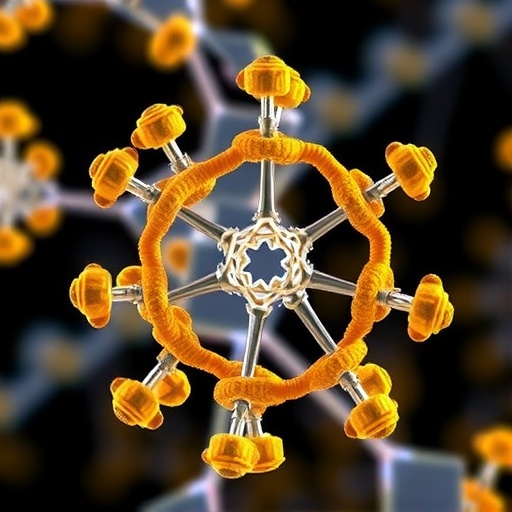
A Breakthrough in Automated Carbohydrate Synthesis Opens New Horizons in Biomedical Research
Carbohydrates are ubiquitous in daily life—present in the simplest pleasures like bagels and bread. Yet, beyond their dietary roles, these molecules perform indispensable biological functions that are still not fully exploited due to their structural complexity. Unlike DNA or proteins, carbohydrates have long posed a formidable challenge for chemical synthesis, hindering scientific exploration and therapeutic innovation. Now, a convergent effort by researchers at UC Santa Barbara and the Max Planck Institute of Colloids and Interfaces has yielded a new method to reliably create short-chain carbohydrates, known as oligosaccharides, with unprecedented stereochemical precision using automated synthesis.
Oligosaccharides are fascinating biomolecules made up of three to ten linked sugar units known as monosaccharides. Unlike large structural polysaccharides like cellulose or energy-storing starches, oligosaccharides frequently appear on cell surfaces where they act as crucial signaling and recognition agents. Their structural diversity—including variations in sugar type, bonding sites, and spatial configuration of glycosidic linkages—makes them incredibly versatile but also notoriously difficult to manufacture with exactitude. The sheer number of possible five-unit oligosaccharides exceeds 100 million, complicating chemical synthesis and isolation from natural sources.
.adsslot_Vjv8KIn3Xb{width:728px !important;height:90px !important;}
@media(max-width:1199px){ .adsslot_Vjv8KIn3Xb{width:468px !important;height:60px !important;}
}
@media(max-width:767px){ .adsslot_Vjv8KIn3Xb{width:320px !important;height:50px !important;}
}
ADVERTISEMENT
The heart of the challenge lies in controlling the stereochemistry of the linkages—that is, the “handedness” or spatial orientation of the bonds between sugars. Traditional chemical reactions often yield mixtures of right- and left-handed connections because the newly forming bond can occur in more than one spatial arrangement. This ambiguity contrasts starkly with proteins and nucleic acids, where bonds form in a uniform manner without producing stereoisomeric mixtures. An oligosaccharide’s complexity increases exponentially as it grows, potentially producing more than 2,000 stereochemical permutations for a 10-sugar chain, rendering nondirected synthesis inefficient and impractical.
Isolation from natural sources offers no viable solution either, as biological degradation of oligosaccharides results in a complex amalgam of similar molecules that defy straightforward purification. While enzymatic synthesis can provide specificity, enzyme development is both costly and time-consuming, especially for early-phase research requiring rapid access to diverse oligosaccharides. Consequently, the development of a broadly applicable, chemically robust, and automatable synthetic method has been a pressing goal in carbohydrate chemistry for over a century.
Addressing this long-standing obstacle, the UCSB and MPIKG team devised a strategy based on bimolecular nucleophilic substitution (SN2) chemistry. Unlike less selective processes, SN2 reactions proceed via a single concerted step where an incoming sugar molecule displaces a leaving group simultaneously, resulting in inversion of stereochemistry at the reaction center. This feature inherently enables precise control over the orientation of the glycosidic bond, ensuring the exclusive formation of either right- or left-handed linkages depending on reaction design. Achieving this stereoselectivity in the complex milieu of oligosaccharide synthesis, however, is nontrivial and requires delicate regulation of reaction kinetics.
The researchers enhanced the SN2 reaction’s fidelity by introducing a directing molecule tethered to the departing group. This molecular “hand” guides the incoming sugar to attack in the correct spatial orientation just before the leaving group departs. The approach works effectively across multiple sugar types and linkage positions, and can be performed under mild, near-neutral conditions compatible with solid-phase synthesis. Anchoring oligosaccharides onto a polymer support allows for iterative addition of sugar units, with the support-bound molecule retained while unreacted reagents and undesired byproducts are washed away at each step—streamlining the purification process and conserving reagents.
Solid-phase synthesis has revolutionized peptide and oligonucleotide production, earning its original developer a Nobel Prize in 1984. Peter Seeberger, a co-author and trailblazer in carbohydrate solid-phase synthesis since 2001, has spent over two decades adapting and refining this technique for sugars. The current breakthrough in stereocontrolled glycosylation now makes fully automated assembly of oligosaccharides not only feasible but accessible to scientists without specialized synthetic chemistry expertise. This democratization of carbohydrate synthesis is expected to accelerate research dramatically.
The implications for biomedical science are profound. Oligosaccharides play critical roles in immune signaling, host-pathogen interactions, developmental biology, and disease biomarkers. Until now, obtaining pure, structurally defined oligosaccharides required months of manual labor and substantial financial investment. The new automated platform can produce these molecules rapidly and with precise configuration, facilitating explorations in vaccine development, autoimmune disease diagnostics, and antimicrobial agents targeting hospital-acquired infections.
Despite the significant progress, some challenges remain. The synthesis of certain complex bonds, such as the elusive “beta mannosidic” linkage, has so far resisted full stereocontrol. The UCSB and MPIKG teams are actively pursuing solutions to these remaining obstacles, expanding the methodology’s scope to include rare and bacterial sugars that hold promise for novel therapeutic applications. Continued advances in carbohydrate synthesis techniques will underpin future breakthroughs in drug development and disease prevention.
This discovery underscores the critical importance of fundamental methodological advances in chemistry for driving applied biomedical innovation. By unlocking the ability to reliably build complex carbohydrates with tailored properties, this work opens new frontiers in glycobiology research and pharmaceutical design. The vision of a “one-size-fits-all” synthetic method for carbohydrates appears closer than ever, thanks to the harmonious integration of reaction engineering, mechanistic insight, and automation championed by these pioneering scientists.
In summary, this research heralds a new era where the structural complexity of carbohydrates is no longer a barrier but an opportunity. With robust stereochemical control and automated synthesis, oligosaccharides can now be produced on demand, fueling discoveries that were previously out of reach. The ripple effect of this achievement will likely permeate biomedical research, leading to more precise diagnostic tools, next-generation vaccines, and innovative therapeutic agents targeting some of today’s most challenging medical problems.
Subject of Research: Automated stereoselective synthesis of oligosaccharides
Article Title: New Method Enables Precise Automated Assembly of Oligosaccharides for Biomedical Innovations
Web References: https://www.nature.com/articles/s44160-025-00846-z
Image Credits: Matt Perko
Keywords
Applied sciences and engineering, Oligomerization, Chemical engineering, Biochemical engineering, Stereochemistry
Tags: advancements in therapeutic carbohydratesautomated carbohydrate synthesisbreakthroughs in biomedical researchcarbohydrate structural complexityglycosidic linkages in oligosaccharidesMax Planck Institute innovationsoligosaccharide production methodsoligosaccharide synthesis challengessignaling roles of carbohydratessignificance of carbohydrates in biologystereochemical precision in chemistryUC Santa Barbara research





